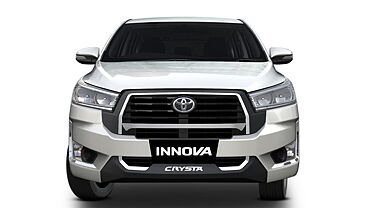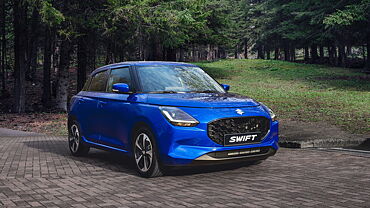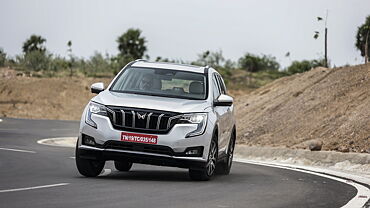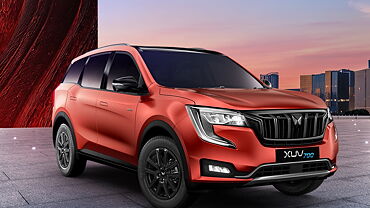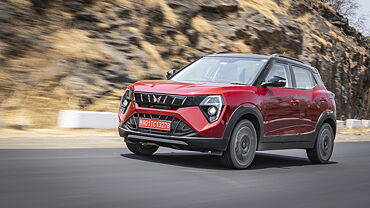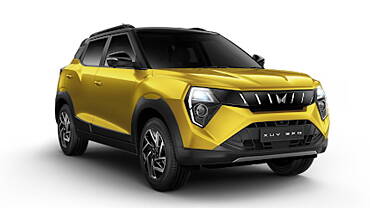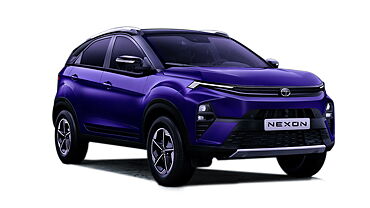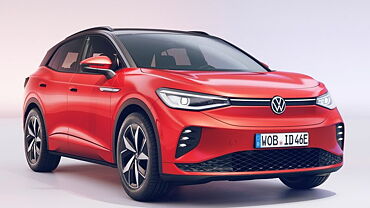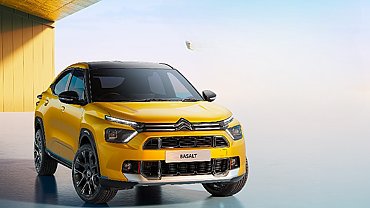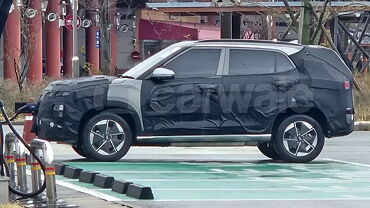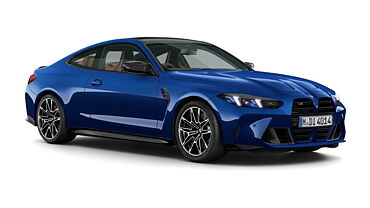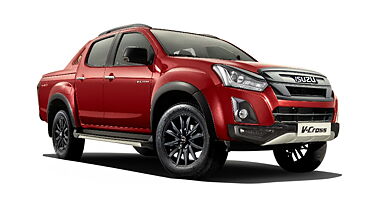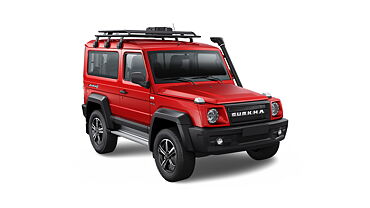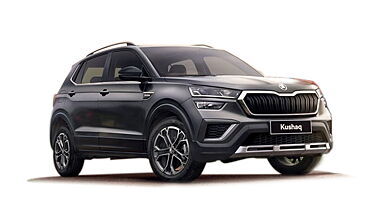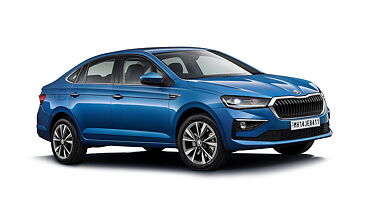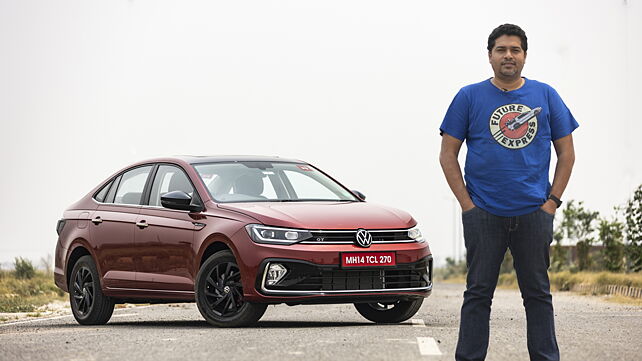
Why I would buy it?
- Premium looks
- Snazzy looking interiors
- Very good ride and handling balance
Why I would avoid it?
- Does not boast typical VW quality
Engine and Performance
Powering the Virtus is the same engine that you see in the Taigun. So, you get a 1.0-litre TSI engine that Vikrant is driving somewhere out there and the stonking 1.5-litre TSI Evo engine that we are driving. The numbers are fantastic – 148bhp and 250Nm of torque along with active cylinder cut-off technology. Gearbox duties are handled by the seven-speed DSG transmission and unlike Slavia, you do not get a manual option with this engine.
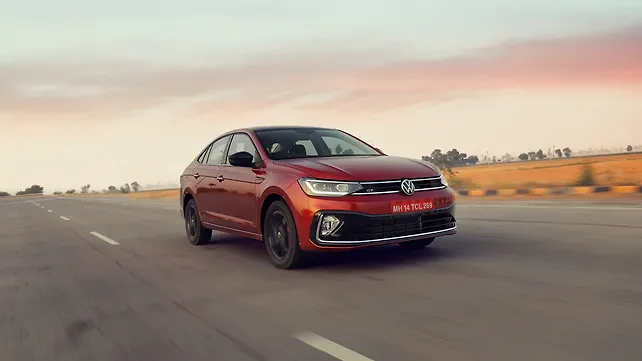
On the go, the TSI Evo motor feels refined with an excellent throttle response. A mere dab is all you need to get past slow-moving traffic. Now, that gives you the impression that the 1.5-litre engine will surprise you when you finally nail the throttle. But it does not. Acceleration does not hit like a hammer, instead, it's linear and builds speeds swiftly. Volkswagen claims a 0-100kmph time of 9.0 seconds which is quick and something we will verify with our Vbox soon.
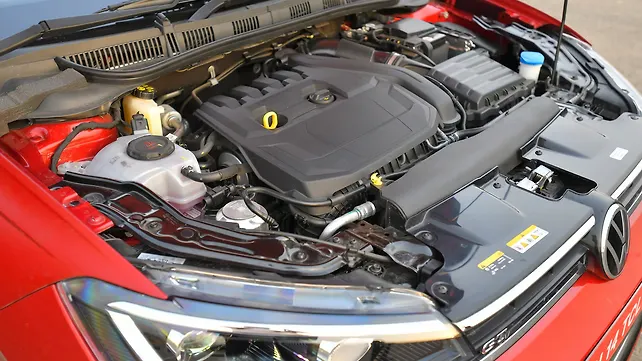
Thanks to the active cylinder cut-off technology, VW claims it is fuel-efficient too with a brilliant figure of 18.67kmpl, again something we will verify soon. The seven-speed gearbox works just as it should. It provides quick changes up and down and is a joy to use with the paddle shifters.
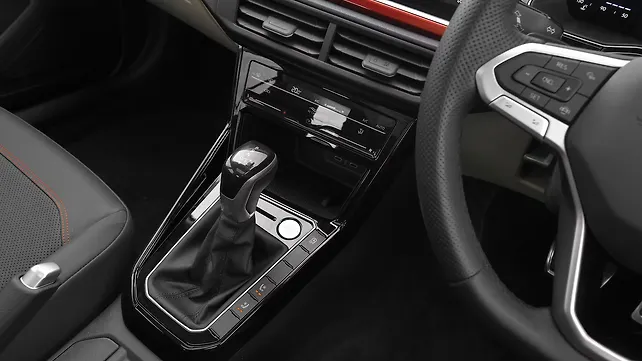
Ride and Handling
A high riding sedan with a higher centre of gravity will be more biased towards ride quality than handling, right? Well, technically it's true, however, Volkswagen has managed to tune the suspension extremely well, giving the Virtus a very good balance of ride and handling. The Virtus feels eager to dive into corners and the quick steering compliments it further. Given a nice set of twisty roads, the Virtus will be a joy to drive.
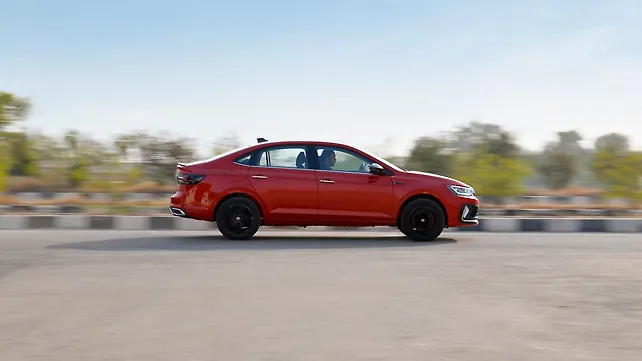
The ride quality is excellent too. While we did not really get Mumbai like potholes to test over in Amritsar, the Virtus felt pliant and absorbing on whatever bad section we could manage to drive upon. The SUV-like ground clearance also means one can sail over bad patches and not think about monster speed breakers scraping the underbelly.
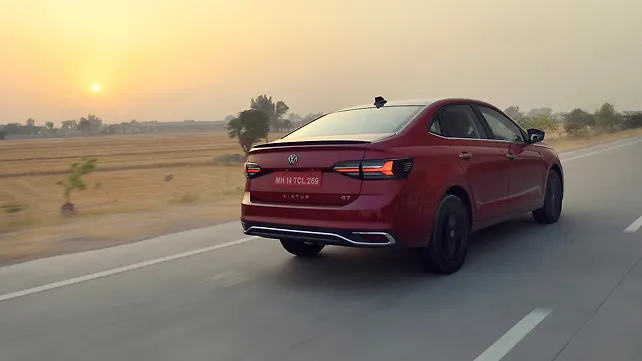
Exterior Design
There is no doubting that the Virtus is a looker, especially this GT variant that we are driving here. Starting at the front, this is an aggressive-looking sedan. The slim LED headlights look great with the smoked treatment and the integrated DRLs and are complemented by the minimal single slatted grille. But the real draw is the front air dam area, which gives it the jawline of Sylvester Stallone. As you can see, the air dam area is a mix of chrome and piano black inserts and also gets halogen fog lights.

Moving to the side, there is more black in the form of the 16-inch razor glossy black alloy wheels. What you can also notice is that this is a really long car and is also 20mm longer than the Slavia, which is based on the same platform that makes it the longest car in its class.
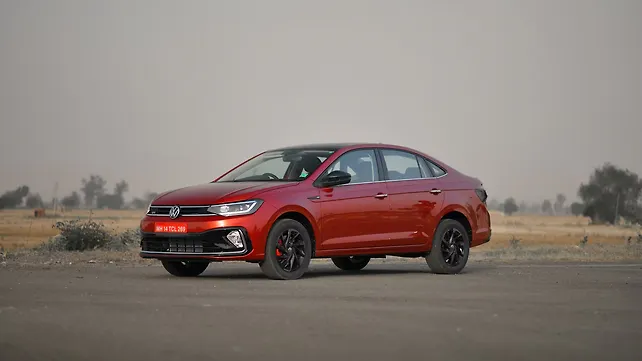
Like the Slavia, the Virtus is also a high riding sedan, which means it also gets a massive 179mm of ground clearance which might look like an eyesore but then it also gives the car SUV-like bad road capability. Moving to the rear, you get these smart-looking LED tail lamps. The subtle black lip spoiler gives it a sporty touch at the rear and adding further contrast is the blacked-out area below, with a chrome insert.
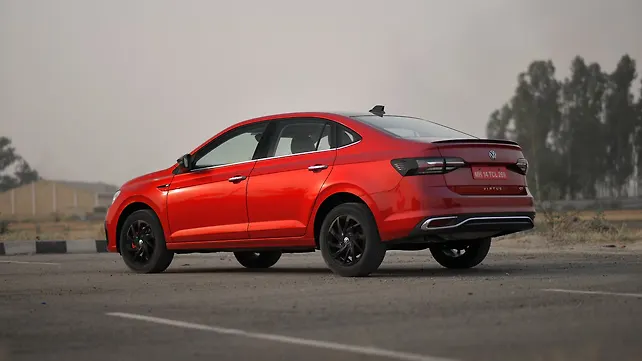
Overall, we think the Virtus looks absolutely smashing and is the sportiest looking car in its segment.
Comfort, Convenience, and Features
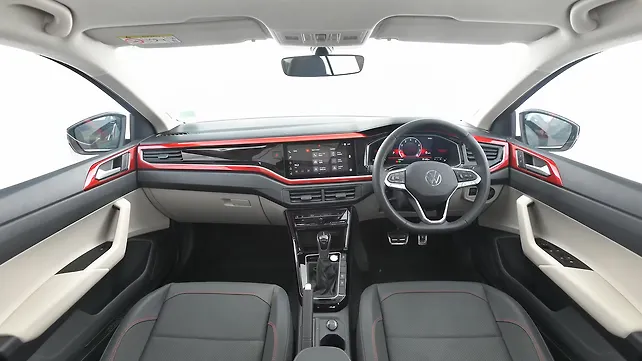
Talking about the interiors, if you liked the exteriors, you will definitely like the snazzy interiors. We just loved how Volkswagen has designed this dashboard to look like one single slab along with the colour coded outline which really adds some pizzazz. What looks a little out of place are these two central aircon vents which just do not sync with the flowing dashboard design. While the dashboard looks great, we think some soft-touch materials would have definitely added some premium-ness.
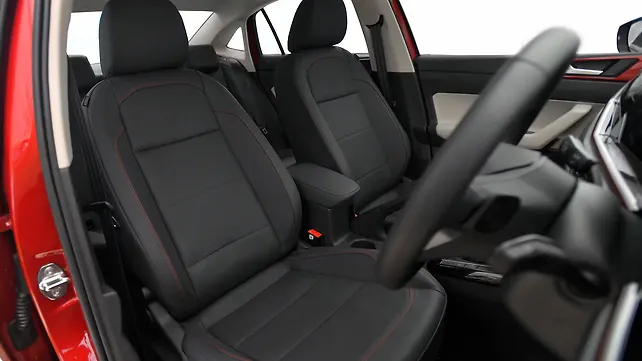
Talking about the seats, the cushioning is a little on the hard side but that will help in making long drives more comfortable. Nonetheless, it has the right amount of support all around and getting to the ideal driving position is easy.
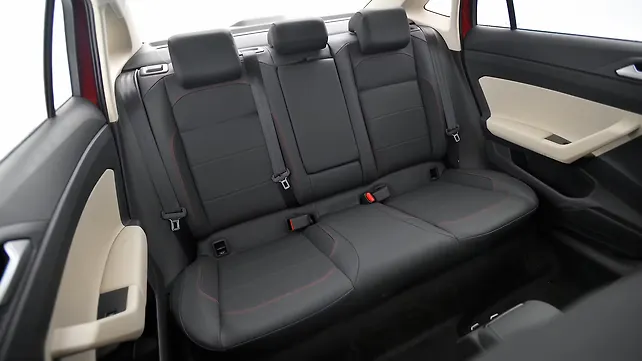
At the back too, there is more than enough legroom. Seating three people abreast, it’s not the best, thanks to the raised and narrower centre seat. Also, under-thigh support could be a wee bit better as well. What is fantastic though is the boot space. At 521 litres, it’s the same as the Slavia but a lot more than the City and a 60:40 split or completely folding the rear bench will provide a lot more luggage space than any SUV.
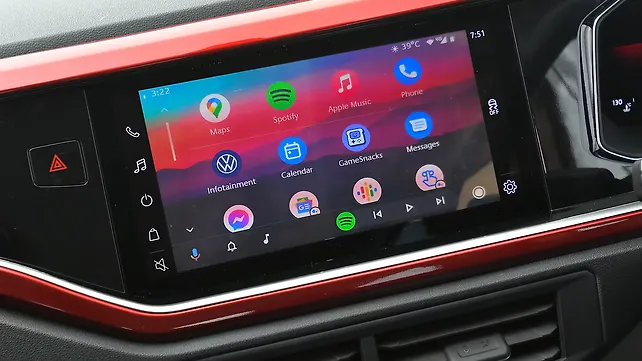
On the features front, the Virtus gets a vivid eight-inch digital cockpit, 10-inch infotainment system with wireless Apple CarPlay and Android Auto, eight speakers, sunroof, wireless charging, smart touch climatronic A/C, ventilated front seats, and more. On the safety front, the Virtus comes with up to six airbags, an electronic differential lock, ESC, hill hold control, tyre pressure deflation warning, ABS with EBD, rear parking sensors, and more. The only miss here is the absence of rear disc brakes.
Conclusion
According to both Skoda and VW, the market for mid-size sedans, basically this segment, is growing despite it not having too many new launches. With the Virtus, they want to cater to this very demand by offering a viable option to the popular Honda City and its brother from another mother, the Skoda Slavia.
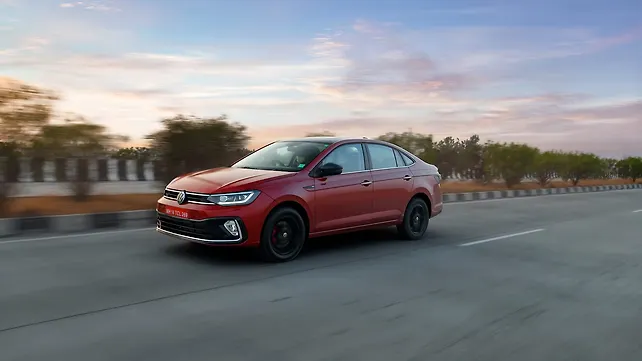
The Virtus definitely has a lot going for it. It’s the largest car in its class, it looks premium, and in this GT variant, it looks sporty too. It also has the space and practicality of an SUV with its folding seats and excellent ground clearance along with a long feature list and performance to boot.
We think the prices for Virtus will start at around Rs 10.6 lakh for the base 1.0-litre and can go up to Rs 18 lakh for this top-spec GT variant. And going by what it brings to the table, we think the Virtus indeed has all the virtues of a winner.
Photography: Kapil Angane
![Volkswagen Virtus [2022-2023] Volkswagen Virtus [2022-2023]](https://imgd-ct.aeplcdn.com/160x89/n/cw/ec/101029/virtus-right-front-three-quarter.jpeg?isig=0&q=80)
